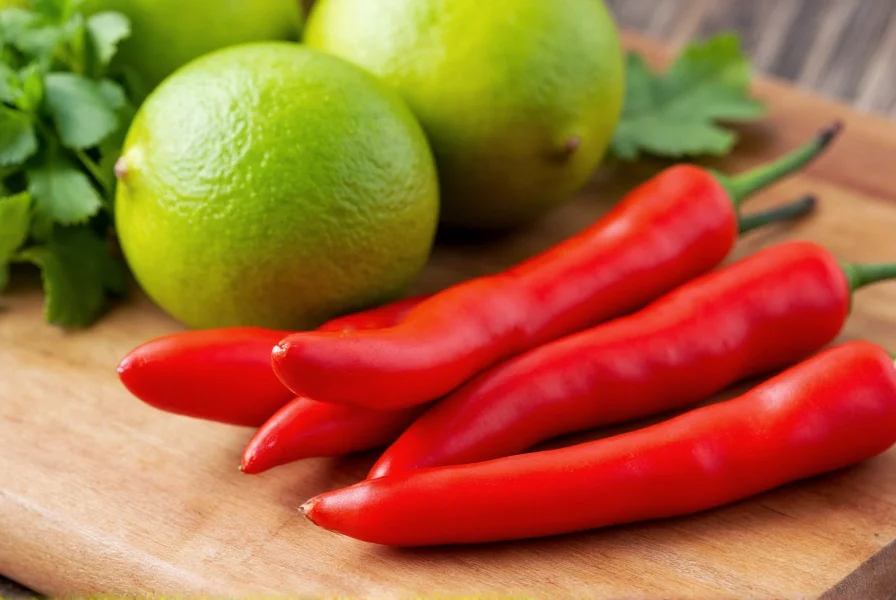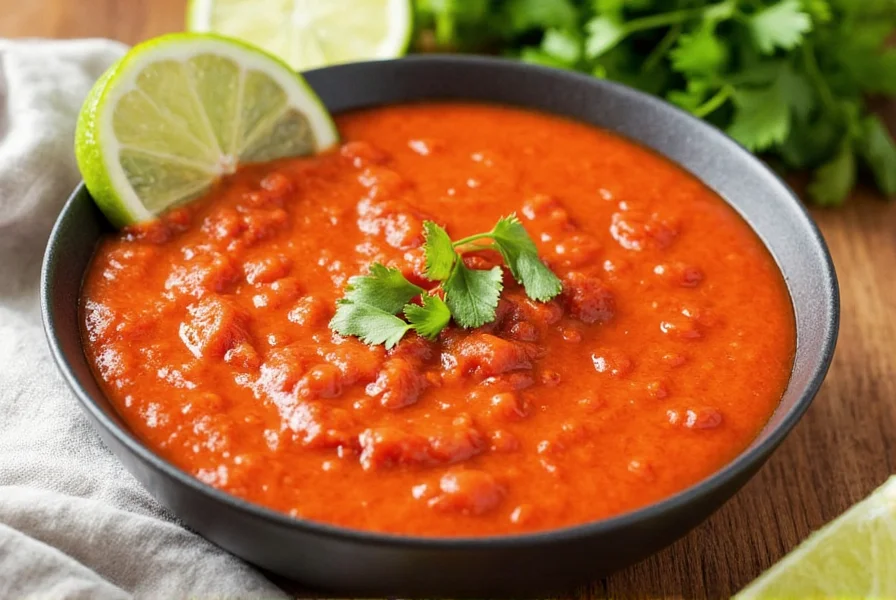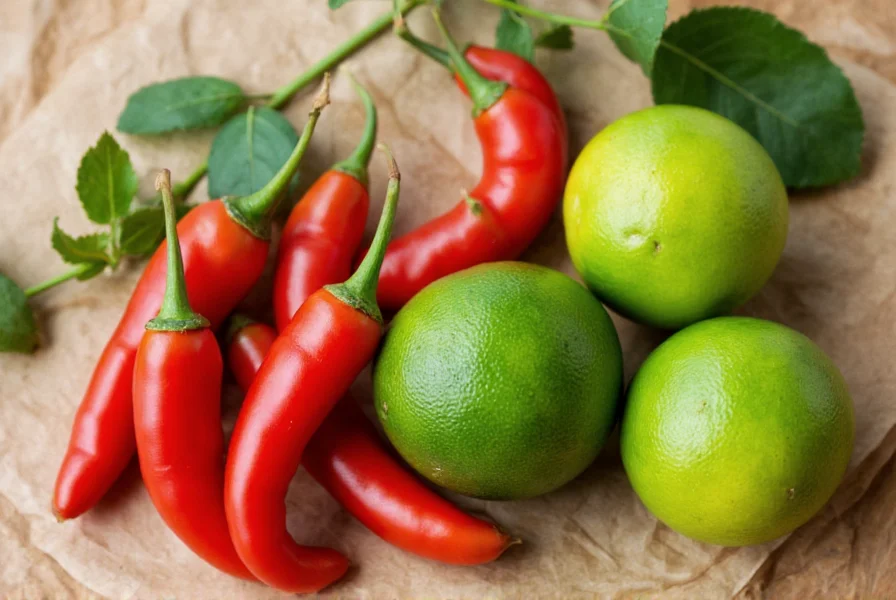When exploring how to balance chili heat with lime in your cooking, understanding the science behind this dynamic duo transforms ordinary meals into extraordinary culinary experiences. The citric acid in limes doesn't just cut through spiciness—it actually breaks down capsaicin molecules, the compounds responsible for chili heat, making fiery dishes more approachable while preserving their vibrant character.
Chefs worldwide rely on this science of acid and spice pairing to create balanced dishes that excite the palate without overwhelming it. From Mexican street food to Southeast Asian cuisine, the combination appears in traditional recipes refined over generations, proving its universal appeal and functional benefits.
The Science Behind the Perfect Pairing
When capsaicin from chilies binds to pain receptors in your mouth, it triggers that familiar burning sensation. Lime juice's citric acid disrupts this binding process through two mechanisms: lowering the pH environment where capsaicin operates and directly interacting with the capsaicin molecules themselves. This chemical interaction explains why a squeeze of lime makes spicy food more enjoyable without diminishing the chili's essential flavor.
| Chili Type | Scoville Units | Recommended Lime Ratio | Best Culinary Application |
|---|---|---|---|
| Jalapeño | 2,500-8,000 | 1 lime per 5 chilies | Salsas, marinades |
| Serrano | 10,000-23,000 | 1 lime per 3 chilies | Fresh sauces, ceviche |
| Habanero | 100,000-350,000 | 1 lime per 1 chili | Specialty hot sauces |
| Thai Bird's Eye | 50,000-100,000 | 1 lime per 2 chilies | Stir-fries, dipping sauces |
Cultural Traditions of Chili-Lime Pairing
Mexican cuisine perfected the authentic Mexican chili lime recipes that have become globally popular. Street vendors traditionally serve fresh fruit sprinkled with chili powder and lime juice—a combination that transforms sweet produce into a complex sweet-spicy-tangy treat. In Thailand, nam prik dipping sauces combine bird's eye chilies with fresh lime juice to create the essential balance in many regional dishes.
Vietnamese cuisine uses this pairing in nuoc cham fish sauce preparations, where bird's eye chilies and lime juice create the foundational flavor profile. Peruvian ceviche relies on the lime's acidity to 'cook' the fish whileaji amarillo peppers provide distinctive heat. These traditional uses of chili and lime together demonstrate how different cultures independently discovered this perfect flavor marriage.

Practical Applications in Modern Cooking
Understanding how to balance chili heat with lime elevates your cooking technique significantly. When incorporating both ingredients, always add lime juice gradually after introducing chili heat—this allows precise control over the final flavor profile. For dried chilies, rehydrate them in warm lime juice instead of water to infuse the acid directly into the pepper.
Professional chefs recommend adding lime juice in three stages: during cooking to mellow the heat, at the end of cooking to brighten flavors, and as a finishing touch at the table for those who prefer extra brightness. This layered approach creates depth that a single addition cannot achieve.
Signature Recipes Featuring Chili and Limes
Classic Mexican Street Corn (Elote)
This beloved street food combines grilled corn with a creamy chili-lime mixture. Mix 1/2 cup mayonnaise, 1 minced serrano pepper, zest and juice of 2 limes, and 1/2 cup crumbled cotija cheese. Spread this mixture over grilled corn, then sprinkle with additional chili powder and fresh cilantro. The lime's acidity cuts through the richness while enhancing the corn's natural sweetness.
Simple All-Purpose Chili-Lime Seasoning Blend
Create this versatile chili lime seasoning blend recipe for meats, vegetables, or snacks: combine 2 tablespoons chili powder, 1 tablespoon dried lime zest, 1 teaspoon garlic powder, 1 teaspoon onion powder, and 1/2 teaspoon salt. The dried lime zest provides concentrated citrus flavor that activates when exposed to moisture in cooking. Store in an airtight container for up to three months.

Advanced Techniques for Perfect Balance
For sophisticated applications of chili lime seasoning blend recipe techniques, consider these professional methods:
- Lime-infused chili oil: Gently heat dried chilies in vegetable oil with lime zest (avoid boiling to preserve delicate citrus notes)
- Chili-lime salt: Blend equal parts sea salt, dried lime powder, and mild chili powder for instant flavor enhancement
- Candied lime zest with chili: Simmer lime zest in simple syrup with a small dried chili for sweet-spicy garnishes
When working with extremely hot chilies like habaneros or ghost peppers, always add lime juice first to your preparation surface before handling the chilies. This creates a protective barrier that helps prevent capsaicin from adhering to your skin and causing irritation.
Storage and Preparation Tips
Maximize freshness by storing whole limes at room temperature for immediate use (up to one week) or refrigerating for longer storage. Roll limes firmly on a countertop before cutting to release more juice. For chilies, refrigerate fresh varieties in perforated plastic bags, while dried chilies should be stored in airtight containers away from light and moisture.
When preparing authentic Mexican chili lime recipes, always remove chili seeds and membranes if you want to reduce heat while preserving flavor. The white pith contains most of the capsaicin, while the flesh holds the distinctive chili flavor. For dried chilies, toast them lightly before rehydrating to unlock deeper flavors that pair beautifully with lime's brightness.
Conclusion
The timeless combination of chili and limes represents one of cooking's most scientifically sound and culturally significant pairings. By understanding both the chemistry and tradition behind this relationship, home cooks can elevate their dishes with confidence. Whether creating simple snacks or elaborate meals, this dynamic duo offers endless possibilities for flavor exploration while maintaining that perfect balance between heat and brightness that our palates naturally crave.
Why does lime reduce the heat from chili peppers?
Lime juice reduces chili heat through its citric acid, which disrupts capsaicin molecules responsible for the burning sensation. The acid lowers the pH environment where capsaicin operates and directly interacts with the capsaicin, making spicy food more approachable without eliminating the chili's essential flavor profile.
What's the best ratio of lime to chili for different dishes?
The ideal ratio depends on the chili's heat level. For mild jalapeños (2,500-8,000 Scoville units), use 1 lime per 5 chilies. For medium serranos (10,000-23,000 Scoville), use 1 lime per 3 chilies. For extremely hot habaneros (100,000-350,000 Scoville), use 1 lime per chili. Always add lime gradually after introducing chili heat for precise control.
Can I use bottled lime juice instead of fresh for chili recipes?
Fresh lime juice is strongly recommended over bottled for chili recipes. Bottled juice often contains preservatives and lacks the bright, complex flavor of fresh limes. The subtle aromatic compounds in fresh lime juice interact more effectively with capsaicin, creating superior flavor balance. If you must use bottled, choose 100% lime juice without additives.
How can I make a chili-lime seasoning that lasts longer?
For a longer-lasting chili-lime seasoning, use dried lime zest instead of fresh lime juice. Grate the zest of unwaxed limes and dehydrate it at the lowest oven setting until completely dry, then blend with chili powder, salt, and other spices. The dried zest provides concentrated citrus flavor that activates when exposed to moisture during cooking and can be stored in an airtight container for up to six months.











 浙公网安备
33010002000092号
浙公网安备
33010002000092号 浙B2-20120091-4
浙B2-20120091-4